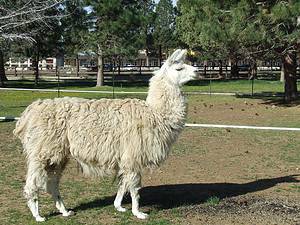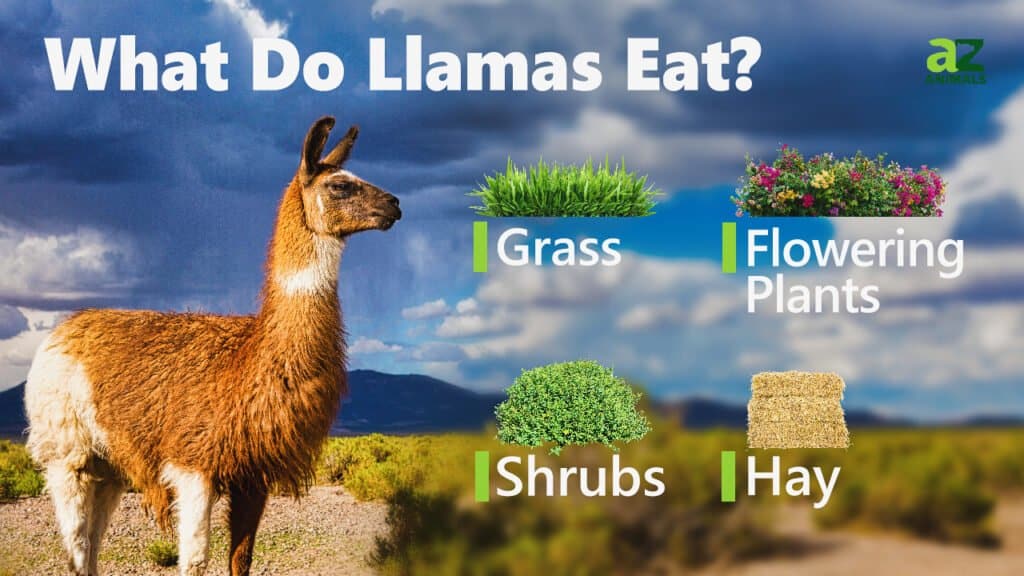
Llamas are wooly herbivores known for their gentle disposition and use as pack animals throughout parts of South America. Given their unique range, unusual appearances, and tendency to be kept as pets, it’s hard not to wonder what llamas eat.
We’ll take a close look at what llamas prefer to eat, how they find food in their habitats, and many other questions that will help familiarize you with these domesticated camelids.
What Foods Do Llamas Eat?
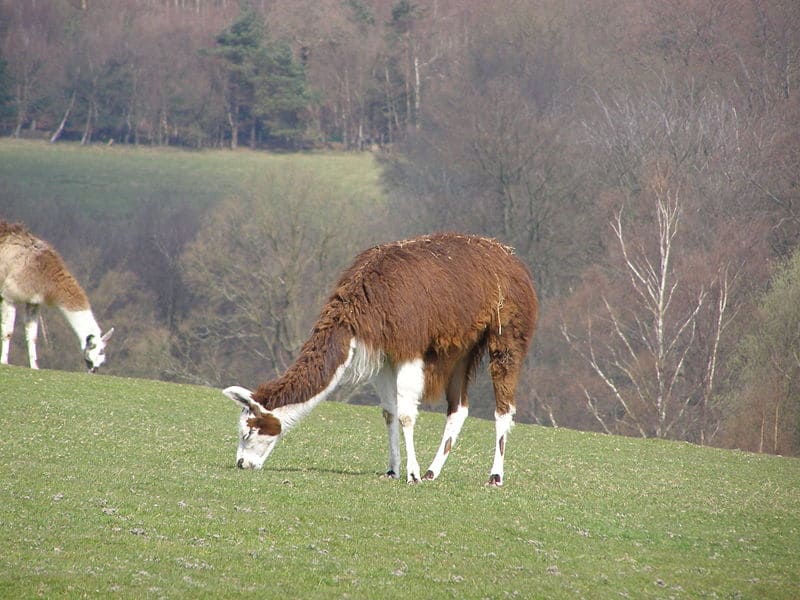
The diet of llamas depends on their climate. For example, it colder climates llamas can survive on lichens.
Llamas eat grass and other plants as herbivores, and their diet consists of various grasses, vegetables, and other vegetation.
They have a large natural range in South America where they are kept as farm animals and pets. As a result, llamas encounter a lot of vegetation while foraging and also receive food from their owners.
Take a look at some of the foods that llamas eat:
- Alfalfa
- Clover
- Timothy hay
- Fescue
- Shrubs
- Small trees
- Grains (as a portion of their diet)
- Lichens
- Corn silage
- Fruits (an infrequent addition to their diet)
- Vegetables.
Much of what a llama eats is dependent on the climate in which they’re raised and the areas they live. They are often kept as farm animals, similar to sheep in that their wool is shorn and used for clothing and more.
Depending on their location, llamas will have access to different sorts of forage, including many of the foods above. On a farm, they will often be allowed to roam and forage for their food.
Their owners will often use various grains to complement the diet of their animals but never as the sole part of their daily food intake. However, it’s often best to provide llamas with pelletized versions of these grains instead of the actual grains.
Llamas, like many other farm animals, enjoy the occasional treat. They enjoy soft fruits and vegetables cut into reasonable sizes. “Treats” for llamas can include:
- Broccoli
- Pears
- Celery
- Beets
- Melon
- Mango
- Bananas
- Watermelon
- Oranges
These foods should not comprise a significant portion of a llama’s diet.
Llamas live around the world, and their diets vary, but they mostly eat the foods we’ve mentioned above, especially local grasses.
What Do Baby Llamas Eat?
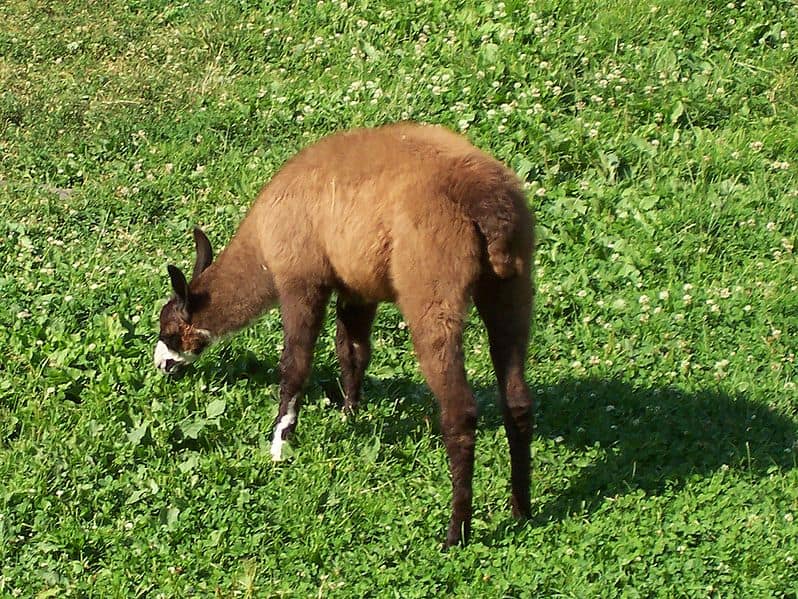
Baby llamas are called crias and begin eating grass a few weeks after they’re born.
Baby llamas are called crias, and their primary source of food is milk from their mother. Within a few weeks, they will begin to forage on their own as a supplement to the milk. By the time they reach six months of age, llamas no longer drink their mother’s milk, and they can assume an adult diet.
How Do Llamas Find Food?

Domesticated llamas are often fed in enclosures.
©Millie Bond – Copyright A-Z Animals
Llamas mostly exist as domesticated animals no matter where they are in the world. Similar to other livestock, llama owners will feed them while also allowing them to graze on their farmland.
Llamas flourish in these settings, feeding themselves while simultaneously keeping natural grasses from becoming overgrowth. Thus, finding food is a simple matter of allowing the llama to seek appropriate foods on their grazing lands or directly feeding them like other farm animals.
Llamas might need some supplementary foods, too. Minerals, protein, and salt supplements are widely available for llama owners to purchase. This is especially true if a llama is being used as a show animal.
Like the cow, llamas will often eat their food, regurgitate it as cud, chew on it again, and then finally swallow it. Using this method, llamas can digest high-cellulose foods in their three stomachs and gain nutrition from them.
How Much Do Llamas Eat?
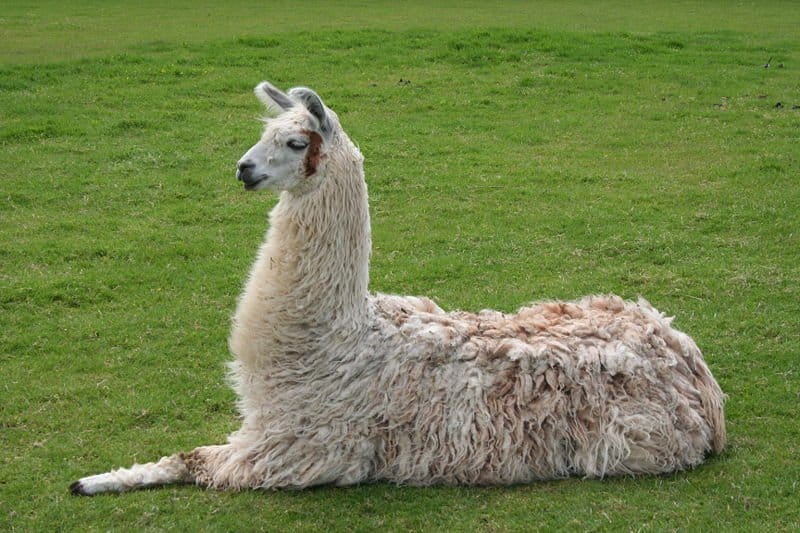
Llamas need a fair amount of food to stay healthy.
An adult llama will typically require about 2-4% of their body weight in food per day, which works out to about 10-12 pounds of food each day. The cost of this isn’t as high as one might think; they eat a lot of hay and naturally occurring grasses.
Crias need to drink about 10% of their body weight in milk per day for the first few weeks of their life. That will provide them with the nutrition they need to grow and mature so they can begin eating adult foods.
Do Llamas Have Any Predators?
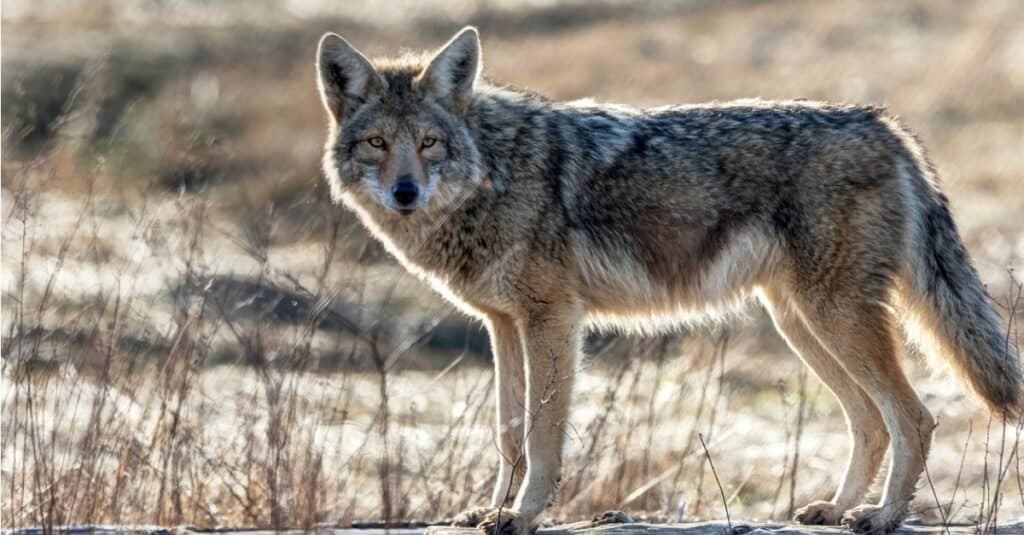
Coyotes are predators for llamas, but they have to be careful.
©iStock.com/jamesvancouver
Llamas are almost entirely domesticated these days, so they have a fair amount of protection against predators from their owners. However, that does not mean they are immune to predation. Take a look at some of the more common predators that llamas have to face throughout their lives.
Llamas can be killed by large carnivore predators, but security measures can also help reduce the incidence of livestock loss. When predators do manage to range in the same area as llamas, they will often pick off the young or sickly rather than fight a healthy adult llama.
Of course, humans could also be counted among the predators of llamas because of their history of killing them for food. Llamas are rarely killed for food since they are frequently kept as pets, as livestock guards, or used for their wool like sheep.
Why Are Llamas Kept as Flock Guards?

Interestingly, healthy adult llamas have been used as flock guards in places where a stray predator has been harming the animals. Llamas are large creatures that bond well with other livestock animals, so they can scare off or confront predators.
Several cases have emerged where guard llamas have fended off coyotes, wild dogs, and other predators. Most of the time, their size and long nails (not hooves) are enough to frighten away any would-be predators. Llamas will go so far as killing the predators in some cases, though.
Llamas are not always successful in their duty, but they have made a significant impact on livestock losses in places around the world. Their owners must be mindful of their location and the potential predators common in the area. A llama can be a tough customer, but some predators, like bears, are too difficult to overcome.
Llamas are interesting herbivores, and they make for great pets, livestock, and guards in some cases. Feeding llamas is not too difficult since they thrive on different grasses, grains, and other foods that are easy to come across.
As long as the llama’s owner does not overfeed the animal or give them too many grains in their diet, the llama should thrive in a pasture setting.
Summary of What a Llama Eats
Llamas have a wide-ranging diet, partially due to their native habitat of the high Andes mountains. Here’s a recap of the foods that llamas commonly consume as well as those which are special treats:
| Number | Food type |
|---|---|
| 1 | Alfalfa |
| 2 | Clover |
| 3 | Timothy hay |
| 4 | Fescue |
| 5 | Shrubs |
| 6 | Small trees |
| 7 | Grains |
| 8 | Lichens |
| 9 | Corn silage |
| 10 | Fruits (Pears, melons, mangoes, bananas, watermelon, and oranges are treats) |
| 11 | Vegetables (broccoli, beets, and celery are treats) |
The photo featured at the top of this post is © Noe Besso/Shutterstock.com
Thank you for reading! Have some feedback for us? Contact the AZ Animals editorial team.



